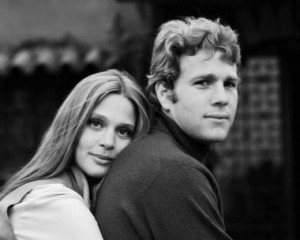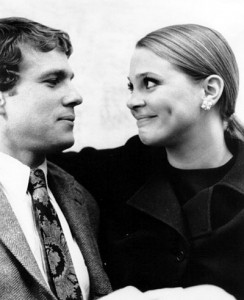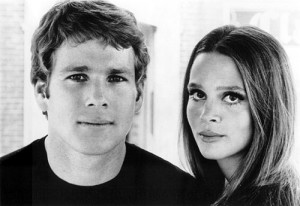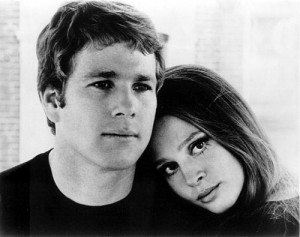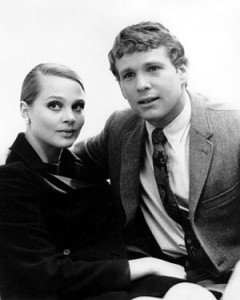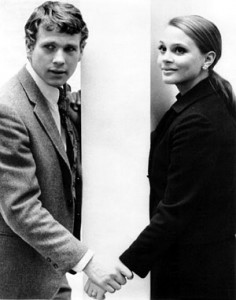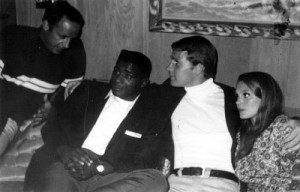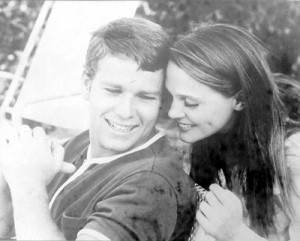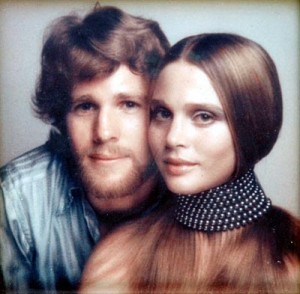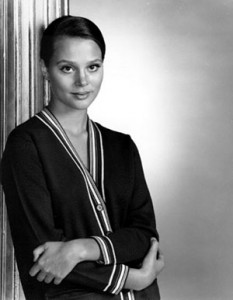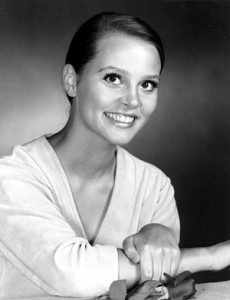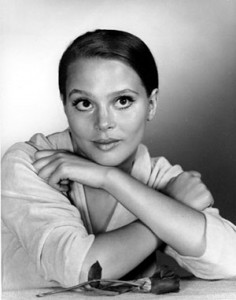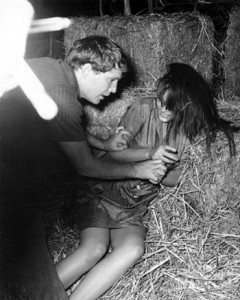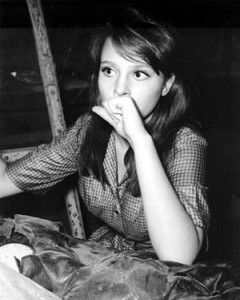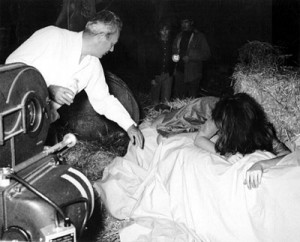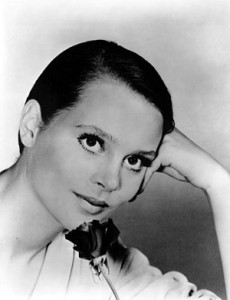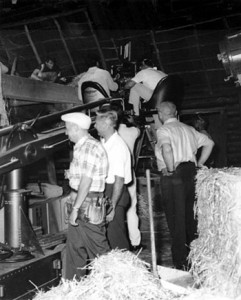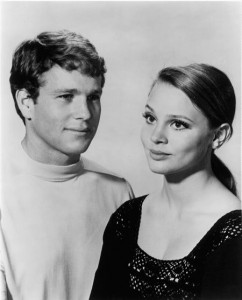
In the spring of 1966, Three Bags Full, a comedy starring Paul Ford, Nancy Marchand, and myself, closed on Broadway. There had been a severe transit strike, and too much loss in ticket sales had occurred due to the lack of transportation in the city. I was disoriented. I was now out of the two-year Neighborhood Playhouse program, and I had no job. The first experience of the “next job insecurity” that affects every actor, hit me hard. Within a month of the plays closing, I had developed pneumonia, probably from the stress of no apparent work. I ended up in Doctors Hospital to recover. While there, I read of a spa in Palm Springs. It appeared to be a health retreat and a place to heal. I called a travel agent to order tickets to Florida. The agent said, “I’m sorry, Palm Springs is in California, not Florida”. I was taken aback. California, what a romantic and faraway place! It seemed much less accessible to me than Florida. I took a risk and said, “All right, I’ll take a ticket to California”.
Within a week, I was in the Palm Springs Spa, run by Anne-Marie Bennstrom, who today owns and runs The Ashram Health Retreat. It was a wonderful place for me and a revelation. There were palm trees, penetrating heat, non-stop clear skies and sunshine, and my first “organic food”. I stayed three weeks instead of one. I had not told my agents I had even left New York City. I did love to disappear occasionally and go where no one could find me. I found that a peaceful, private, and liberating thing to do. I always felt more enriched in myself when I would return. In the third week at the Spa, I finally called my agents to tell them where I was. Stark Hesseltine, my primary agent, said, “You must go to Los Angeles on your way back to New York, meet my West Coast partner, and have some meetings with casting agents and producers”.
I was very reluctant to do this, as I was absolutely clear that Theatre was all I wanted. However, I respected Stark greatly, and I wanted to be an agreeable client. I went to Los Angeles and met with Wally Hiller, a delightful man and agent who immediately set up various meetings. I was innocent and unknowing of how the film and TV industry worked. I enjoyed going here and there for meetings, and didn’t take any of it very seriously. I was looking forward to returning to New York and preparing for the fall auditions in the Theatre. On my third day in Los Angeles, Wally told me I would be meeting the producers of Peyton Place. Peyton Place at that time, in 1966, was in its second year of being a television phenomenon. It was the first American night-time soap opera, and the country was mesmerized by it. It was based on the book, Peyton Place by Grace Metalius. This book had been, in its time, America’s “raciest” novel. The television show, of course, could not be so sexual, but the resonance from the book’s reputation lent a tone of the “forbidden” to our show. It was an ensemble cast of young and beautiful actors who were supported by many fine character actors and former film stars. The predominant young stars were Ryan O’Neal, Mia Farrow, and Barbara Parkins. The older stars included Dorothy Malone, Dan Duryea, Lee Grant, and many more.
The younger actors had all become stars, and filled the movie magazines. I had never seen the show. I had either been working nights in my play or had been in school. So, when I walked into this meeting, I was relaxed and fairly unknowing. Those present were Paul Monash, Ernie Chambers, Wally, and myself. I remember having a feeling that something was about to change. There was an excitement in the air. I don’t know, in looking back, if these were premonitions, or simply an attunement to what seemed to be an enthusiasm for me on their part. I cannot explain why they were so receptive. It was just a meeting. They were, however, actively looking for a young actress to replace Mia Farrow, who had left the show quite suddenly to start a new life with Frank Sinatra. They asked if I would come back in a few days and do a scene from The Glass Menagerie by Tennessee Williams. It meant a delay in my return to New York, but Wally Hiller assured me that it was important. I immediately began working with an actor-client of Wally’s to prepare the scene. We did it for the producers, and again, this sense of excitement was present.
I was now very ready to go home, and said so, strongly, the next morning to Wally. He said, “Well, I have news for you. The producers want to give you a screen test”. This was my first exposure to the system where first the deal is made, then the screen test. This gives maximum leverage to the employer. I did not want any part of it, especially when I heard the contract was for seven years. This horrified me. It meant that if I did the audition, and they loved it, automatically the contract would be in effect. I was so stubborn and resistant about it that Stark called my mother in Detroit to get her assistance. Mom called me. She reasoned that even if I was under contract and used for the full seven years, I would still be young, only more experienced. I would also be financially secure enough then to choose back into a career in Theatre. She helped me step into the adventure that was being presented to me. I agreed to the test and began to prepare myself.
The screen test was scheduled in the middle of a Peyton Place shooting day on Stage 9 at Fox Studios. My makeup for the test was put on by an old “codger” of a makeup man everyone called “Shotgun”. I later learned he was very famous and worked almost solely with Frank Sinatra. The makeup area was on the open stage, which looked like a large cavernous warehouse with different interior “sets” of the town of Peyton Place. There were bedrooms, living rooms, kitchens, and the interiors of Peyton Place stores. I remember how real they all looked. During my makeup, I saw several of the young stars of the show coming to the stage. One came up and said, “Hello.” He was cocky, very sure of himself, and said something encouraging to me. I recognized him as Ryan O’Neal.
I was then taken to a living room “set” and sat on a couch. The actor I had worked with on the scene was brought in and sat next to me. I saw a huge machine called a 35 mm film camera, with a man riding on it, moving towards me. Lots of men were moving big lights and placing their focus and attention on me as if I were an object. The large camera looked ominous as it set its position. The lights came on, and I saw just behind the camera eight chairs placed in a semi-circle. All the young Peyton Place stars were gathering to sit and watch my screen test. Somehow the word about me was out amongst the cast, and they wanted to see me work. I was not only adjusting, on the spot, to a whole new mechanical environment of camera, lights and crew, but now all the stars would be watching. The director of my test introduced himself as Jeffrey Haydyn. He explained what was going on. I must have looked like a “deer in headlights”, and I felt like one.
When the moment came to begin on “action”, I had already gone deep inside to a place where I was centered in the character’s life. Everything went so silent as the scene was shot. When it was done, Jeffrey put his arms around me and seemed very pleased. I felt like I was in an altered state. The next day I was told that I would begin as a regular on Peyton Place in the character of Rachel Welles. I had a month to return to New York, gather my things, and move to Los Angeles to begin a new career in television.
This photo of Ryan and myself was taken in the first week I started filming, late August of 1966. It was my first photo shoot. I didn’t know Ryan at all, other than as a television star and a movie magazine “man about town”. They had me photographed with each young star, as I was readied by the Fox press department to be presented to the public as a new resident of Peyton Place. To say that life mirrored art would be trite, but I would have to admit that very soon, my life did take on the aura of the unreal. I soon became one of these young stars, and my relationship with Ryan began, which would alter my life.
LTY and Ryan
- TV executive Tom Tannenbaum, World Heavyweight Champion Floyd Patterson, Ryan O’Neal and LTY September 1967 (LTY 9 months pregnant with son Patrick)
Peyton Place Moments
- Peyton Place Photo by Erik Madden
- Peyton Place Photo by Erik Madden
- Peyton Place Photo by Erik Madden
- LTY With Christopher Connelly (Norman Harrington)
- LTY as Rachel Welles
- LTY With Director Walter Doniger
- LTY as Rachel Welles
- Peyton Place First day of Shooting
- LTY and Ryan
